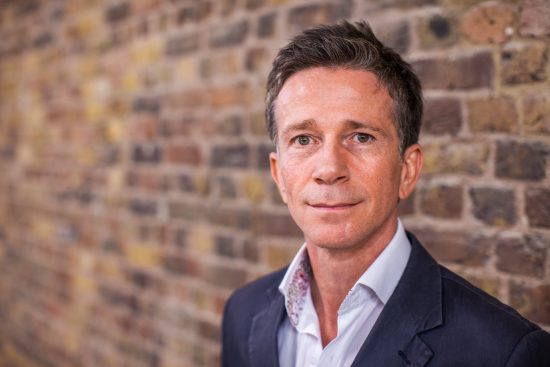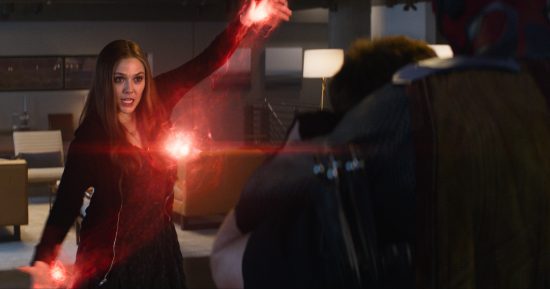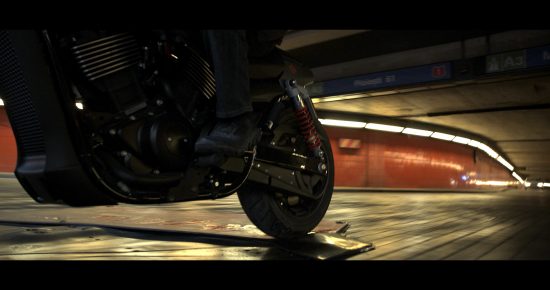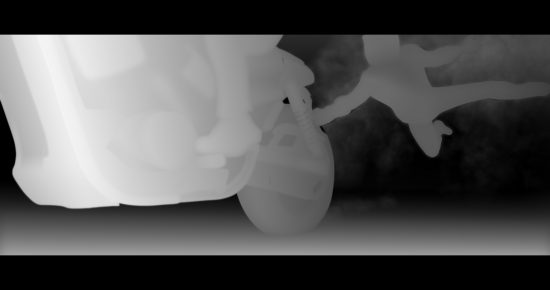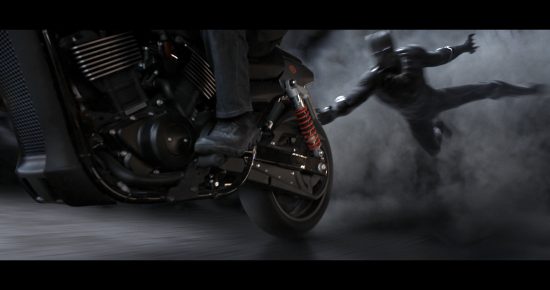In-Depth: Prime Focus World & Captain America: Civil War
Trevor Hogg takes a look back at Captain America: Civil War by speaking to Prime Focus World about converting the epic tale into a stereoscopic experience…
In keeping with Marvel Cinematic Universe tradition Captain America: Civil War goes beyond the regular 2D experience. “It’s fair to say that Marvel projects are generally high-octane action films, and the 3D is played in a way that works well for that style – quite dynamic, deep, and making the most of any 3D moments that are available,” observes Prime Focus World Creative Director of Stereo Conversion Richard Baker. “Marvel sets a high standard in terms of 3D. In terms of style there is definitely a Marvel way of doing things. Since Evan Jacobs, Marvel’s Stereo Supervisor, took over the 3D side of things the standard has been consistently high and a distinctive style has been established so you know what a Marvel film is going to look like. They have a house style that applies to all aspects of the MCU – from VFX to writing to funny moments to action – there is a Marvel recipe that works really well. Prime Focus is proud to have delivered stereo conversion services for some of Marvel’s biggest movies, from Guardians of the Galaxy to Avengers: Age of Ultron. For Captain America: Civil War, we delivered about 53 minutes of the movie and the rest was delivered by Stereo-D.”
“All our interaction is with the production team at Marvel,” explains Richard Baker. “Just as the VFX Supervisor sets the brief and liaises with the VFX vendors, so Evan at Marvel will specify the requirements for the stereo conversion and supervise this process. We’ll generally screen an early version of the film with Evan at the start of the project, discuss the brief, gets some test shots, talk about what might be challenging in the conversion. For example fast cut action scenes, complex content and scenes that require a certain style. Once in production we have weekly calls with Marvel production for which they gather all the departments working on the film, from DI, sound, VFX and stereo. We’re all intimately involved in the process and clear on deadlines and requirements.” There is a need to be flexible. “There are on-going changes to the edit as the production develops, and Marvel always keeps the edit live until late in the process. We’ll often start with a WIP shot which may still have green screen elements, and it’s not uncommon for them to do a push-in or reframe the shot as the edit develops. This always comes from the edit not from us.”
“We converted all the VFX work of our sister company Dneg, and we are well set up with them to harvest the elements from their shots that we require for conversion,” states Richard Baker who also handled elements from Animal Logic, Cantina Creative, Capital T, Cinesite, Crafty Apes, Exceptional Minds, ILM, Lola VFX, Luma Pictures, Method Studios, Trixter, Rise FX and Sarofsky. “In terms of the elements pipeline, the VFX work will be made available to us in compositing scripts containing all the constituent elements and layers that we need for the conversion. “We use our AssistedBreakout tool to render out ‘minicomp’ versions of these huge files to give us a more manageable script. Without this proprietary tool the breakout process is manual and takes skilled artists much longer to perform. The depth generation is handled through our View-D conversion process, using depth mattes, Z-depths if available, geometry and hand-sculpting to create a depth map which gives us the offset. We use both Fusion and Nuke pipelines, depending on the requirement. I’ll review every shot first here in London and deliver any internal notes. Once I’m happy, the shot goes forward to the client for approval, and any client notes are reviewed over TVIPs, our live stereo review system, with Evan Jacobs in LA and me in London.”
“We used geometry for each of the main characters’ heads, as we do on all our shows,” notes Richard Baker. “We’ll ideally take cyber scans of the characters. If these are not available we can create the geo ourselves from references and track to the live-action. There are a number of benefits to this approach, including accuracy of the stereo depiction of the characters and consistency across shots and sequences, and it makes the whole process much quicker, especially in review because I’ll know that the stereo is accurate for the characters’ faces. For a character like Black Panther, who is predominantly CG for a large part of the time, we are able to take Z-depths from the VFX house to ensure accuracy and consistency in the stereo.”
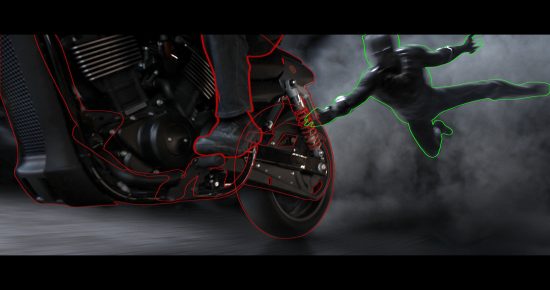
All of the shots handled by Prime Focus World were plate-based with CG set extensions as required. “Explosions are part of the element harvest from VFX generally,” states Richard Baker. “Scarlet Witch has a cool magic effect, which is affectionately referred to as her ‘wiggly woo’, and the elements harvest was really useful for this also. One big sequence we delivered was the scene in which we see a younger version of Tony Stark, which turns out to be a hologram. For the transition out of the hologram at the end of the sequence we requested stereo renders from VFX vendor Animal Logic. We created stereo cameras and sent them through to Animal Logic so that they could stereo render the hologram layers for our scene in depth – a technique we first used with Framestore on Gravity.”
“Black Panther’s suit was replaced in almost every shot, and we used Z-depths from the VFX vendor to ensure accuracy and consistency in the stereo,” remarks Richard Baker. “For Vision phasing in and out we used deep composites from Dneg. As part of the effect you see inside Vision and can make out veins. There was also a distortion layer in the composite that we could treat separately in depth. We got the deep passes to get a nice look for it, and we were able to look development this internally pretty effectively because our colleagues at Dneg are situated in the same building as our stereo team in London. For Scarlet Witch’s ‘wiggly woo’ magic we got about 12 layers of ‘woo’ for each shot and displaced each layer individually to build up a nice stereo effect.”
“There was a shot of Bucky that could be seen as a happy accident in terms of the stereo,” reveals Richard Baker. “In the shot, Bucky swings his motorbike around towards camera. It doesn’t immediately seem like it would make a particularly noteworthy shot, but when I saw the first pass in stereo it was clear that this could be a really nice 3D moment. In terms of shots I’m looking forward to seeing on the big screen, I think the airport showdown between the two teams of superheroes is going to take some beating. I’m looking forward to seeing Ant-Man on the big screen again after our work on his stand-alone film.” Baker adds, “It really is an awesome film, and I can’t wait to see it in the cinema!”
Imagery courtesy of Disney, Marvel Studios and Prime Focus World.
Many thanks to Richard Baker for taking the time to be interviewed and for more information visit the official website for Prime Focus World.
Trevor Hogg is a freelance video editor and writer who currently resides in Canada; he can be found at LinkedIn.

